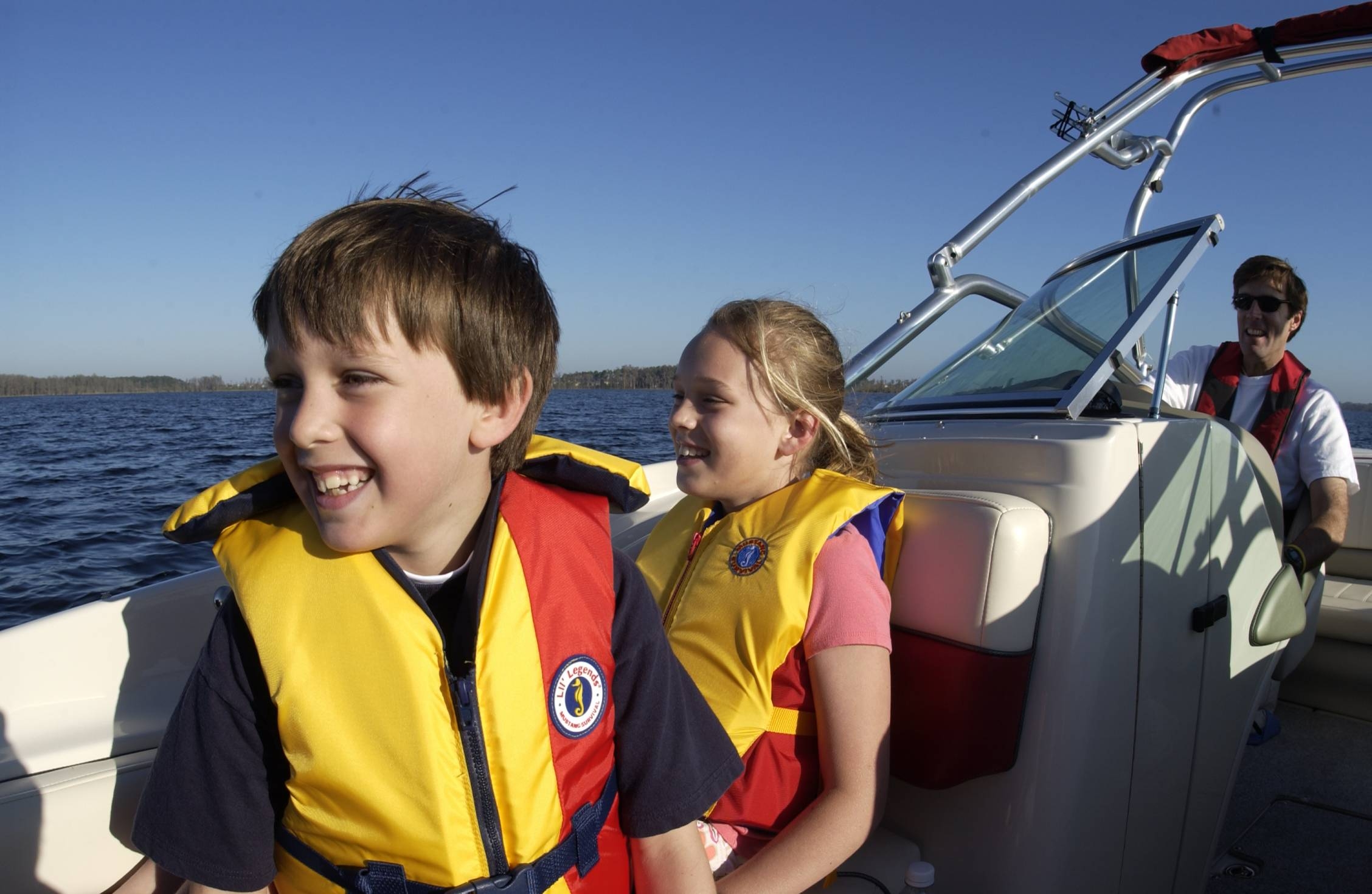
A life jacket is a safety device designed to keep someone's nose and mouth above water should the person fall overboard or be involved in a plane crash on water. Life jackets are required safety equipment on board boats and aircraft, and people are expected to wear them or have ready access to them in the event of an emergency. There are a number of lifejacket designs available for various applications and they are available through catalogs, as well as boating supply stores.
Life jackets strap securely to the body with adjustable straps to hold them snugly in place, even when people fall from heights. Chambers filled with air, foam core, cork, and other light substances force the person to the surface of the water and hold the person up, keeping the head above water. Life jackets protect people who are unconscious, injured, or fatigued, preventing them from slipping underwater and drowning while they wait for rescue.
Typically, life jackets are brightly colored to make them easier for rescuers to spot. Some have beacons designed to light up when activated, allowing for nighttime rescue, and the beacons can also be fitted with transponders to send a signal to another location. Additional fittings such as small pouches to hold energy bars or water may be available on some designs.
On small watercraft, it is generally recommended that people wear life jackets at all times. People can fall overboard unexpectedly or be washed over by waves, and wearing a life jacket is critical for safety. On large craft and cruise ships where life jackets are not required at all times, people should still make sure they know where their life jackets are and how to use them. On aircraft, under seat storage is used for life jackets so passengers can grab them quickly if a water landing is going to occur. A life jacket on a plane is usually inflatable. People leave the life jacket flat while in the aircraft, and inflate it after the exit the aircraft. This is intended to make it easier to evacuate.
It is important to periodically inspect life jackets to confirm the straps are working and check to see that the beacon and transponder are operational. Straps tend to weather and fray as a result of being exposed to water and sunlight and should be checked for signs of hard wear. If the straps appear to be damaged, they or the life jacket should be replaced for safety. People should also make a habit of adjusting their life jackets as soon as they put them on to position them firmly on the body. | 







